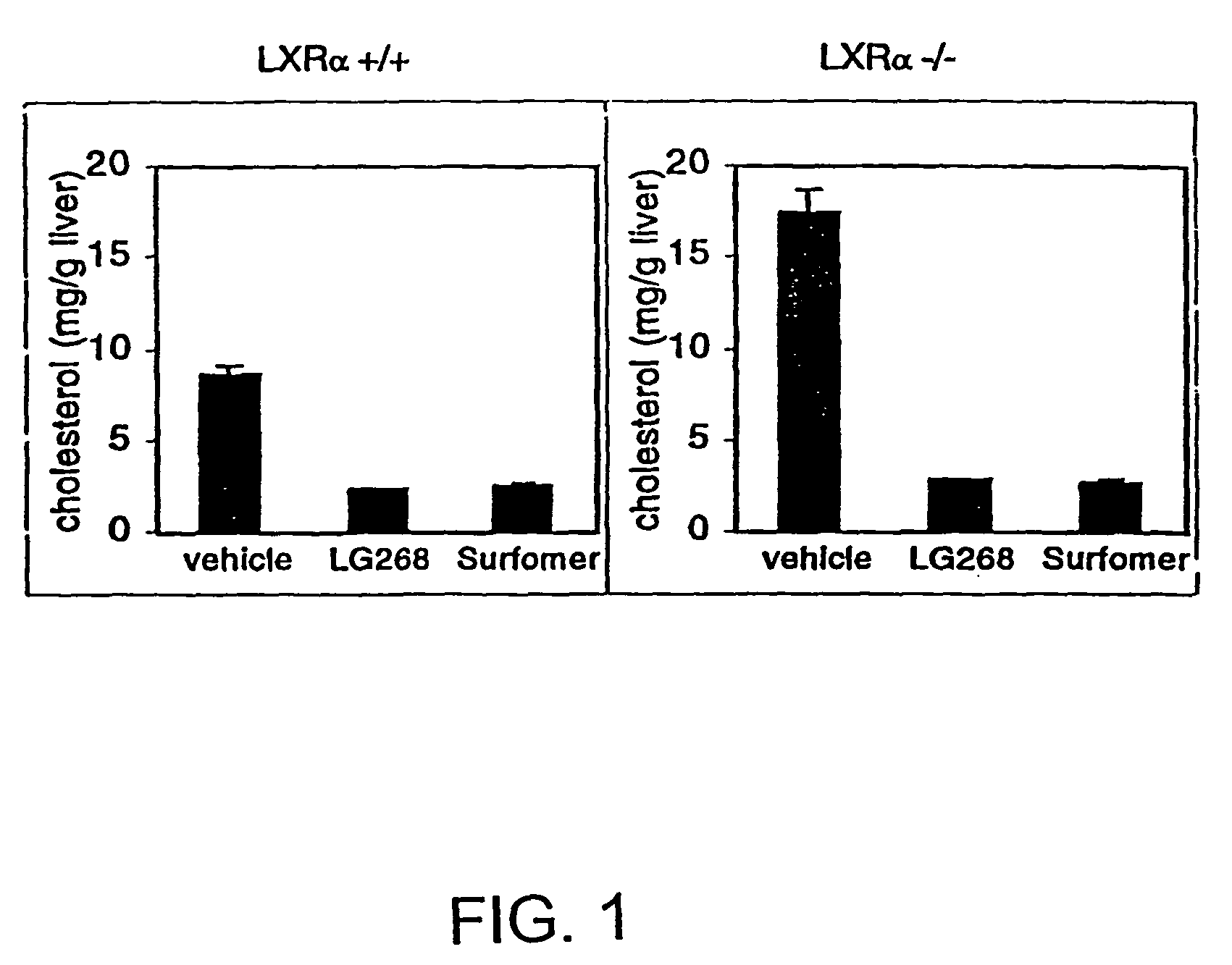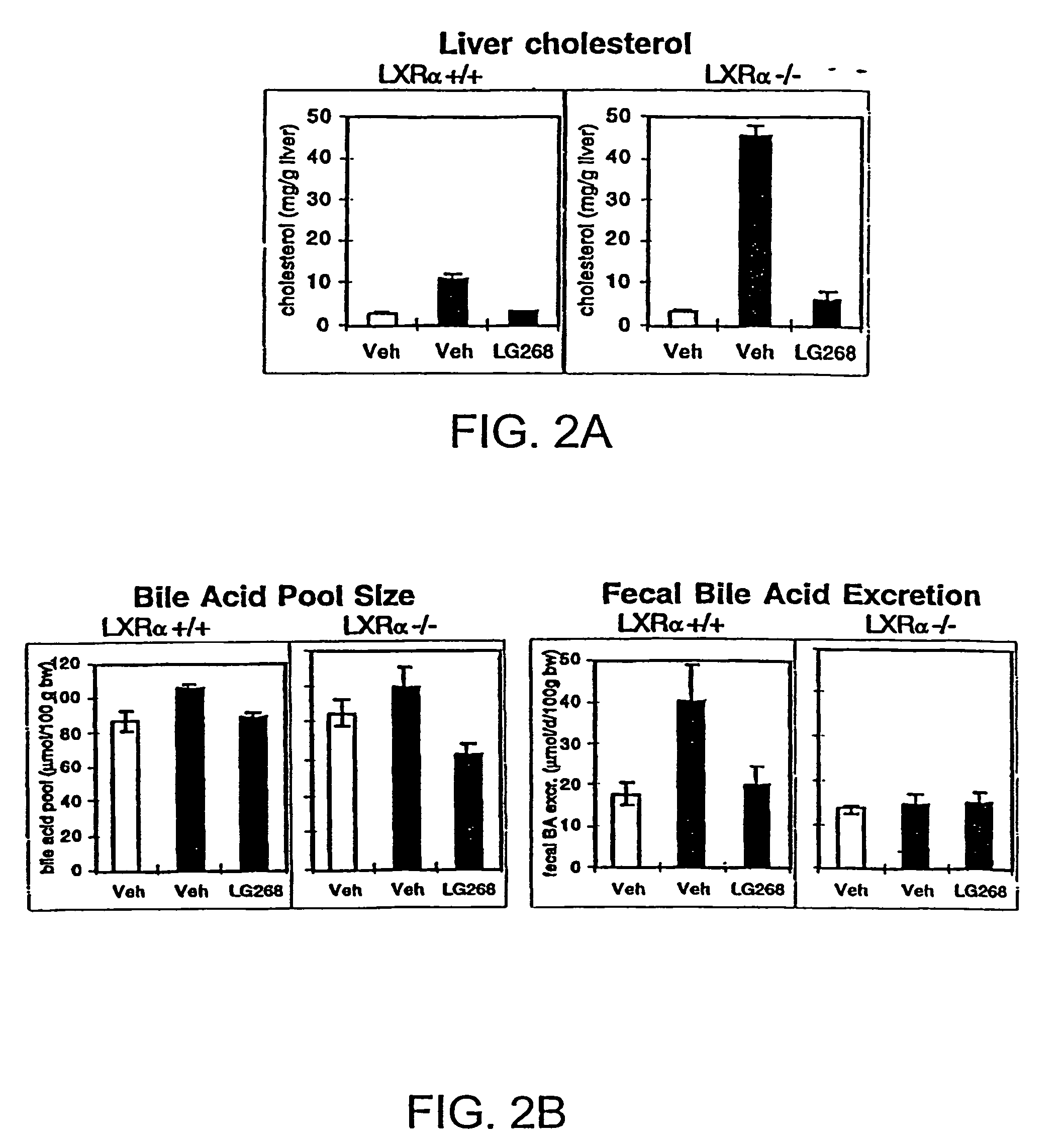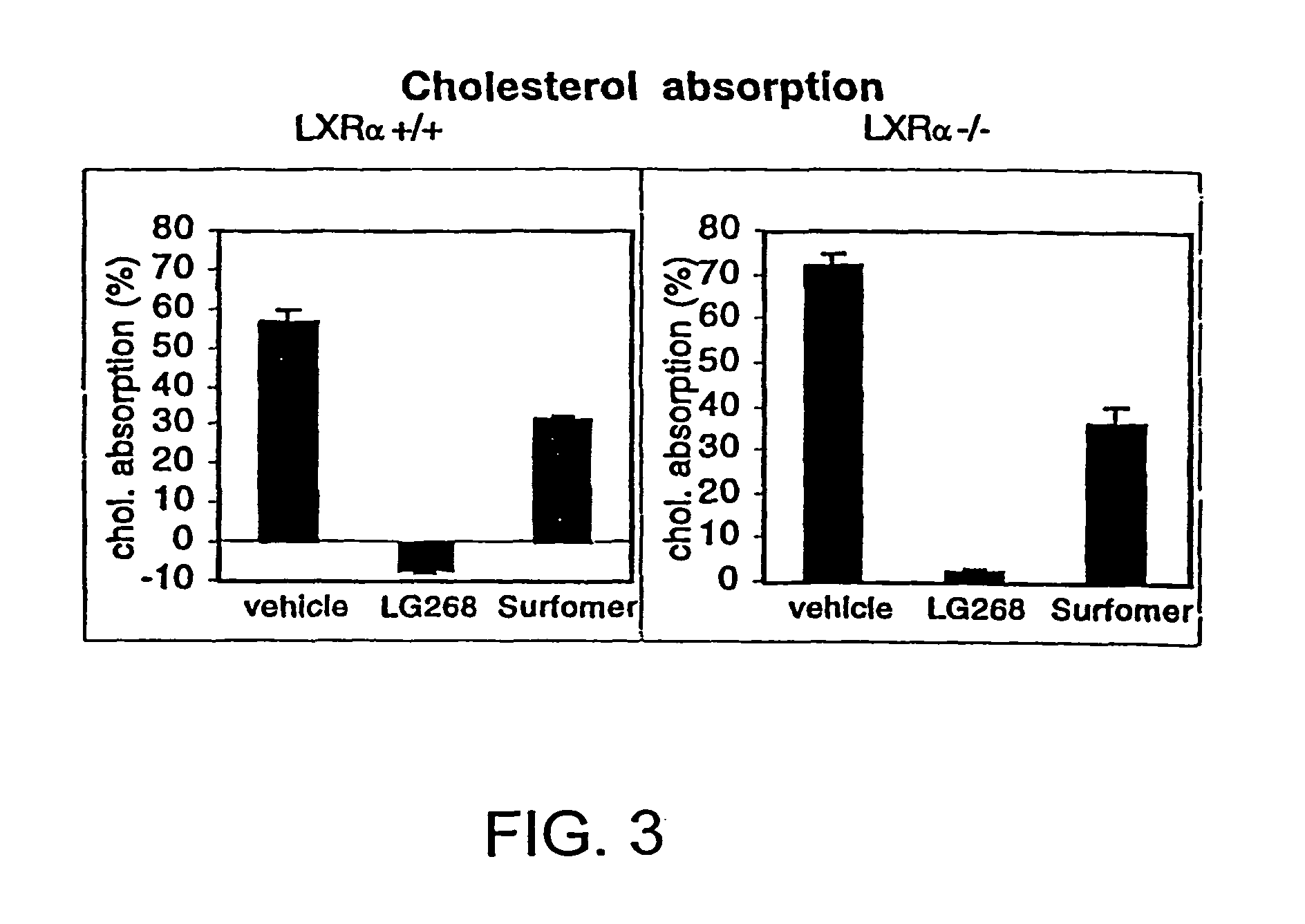Compositions and methods of modulating cholesterol metabolism
a technology of cholesterol metabolism and composition, applied in the field of biochemistry and molecular biology, can solve the problems of low efficacy of these drugs, insufficient dietary cholesterol intake, constipation and bloating, etc., and achieve the effects of reducing cholesterol absorption, monitoring cholesterol absorption, and inhibiting cholesterol absorption
- Summary
- Abstract
- Description
- Claims
- Application Information
AI Technical Summary
Benefits of technology
Problems solved by technology
Method used
Image
Examples
example 1
Materials and Methods for Preparation and Study of LXRα Knockout Mice
[0226]Construction of the LXRα Targeting Vector
[0227]Mouse LXRα genomic clones were obtained by screening a 129Sv λ genomic library using the 1.4 kb full-length cDNA of human LXRα (Willy et al., 1995). The targeting vector was constructed using a neo-TK template plasmid containing a neomycin and two tandem herpes simplex virus thymidine kinase cassettes (Rosahl et al., 1993). This vector was designed to replace exons 3-6 by homologous recombination, which contain the complete DNA-binding domain and majority of the ligand-binding domain of LXRα (amino acids 86-327). A short arm was generated by blunt end inserting the 1.9 kb EcoRI-Apal fragment containing exons 1 and 2 into the unique BamHI site 5′ of the neo cassette, and the longer arm by blunt end inserting the 4.0 kb Ncol fragment containing exons 7-9 into the unique Xhol site located between the neo and TK cassettes. The targeting vector was linearized at a uni...
example 2
Targeted Disruption of the Lxrα Gene
[0242]The mouse Lxrα gene includes nine exons that encompass the translated portion of the gene. Exons 1 and 2 encode the amino-terminal portion of the receptor (A / B regions), exon 3 encodes all of the DNA-binding domain (C region), and exons 4-9 encode the hinge and ligand-binding domains (D and E regions). A targeting construct was prepared by inserting a PGK-neo cassette between an Apal site at the beginning of exon 3 and an Ncol site in the intron between exons 6 and 7. Homologous recombination of this construct in SM-1 ES cells replaced exons 3-6 encoding the DNA-binding and ligand-binding domains of LXRα (amino acids 86-327). Two ES cell clones were chosen for generation of chimeric, heterozygous (LXRα (+ / −)) and homozygous (LXRα (− / −)) mice. Mutant mice were viable and fertile, and they externally appeared normal when reared under normal laboratory conditions on standard rodent chow. Under these conditions, heterozygous and homozygous anima...
example 3
Hepatomegaly and Cholesterol Accumulation in LXRα Null Mice
[0243]Previously, the inventors and others have shown that LXRs are activated by a specific group of monooxidized metabolites of cholesterol, including-22(R)-hydroxycholesterol, 24(S)-hydroxycholesterol, and 24,25(S)-epoxycholesterol (Janowski et al., 1996; Lehmann et al., 1997). The fact that these metabolites are naturally occurring and are elevated in tissues where cholesterol metabolism is high (e.g., the liver) led to the prediction that LXRs may have a role in the regulation of cholesterol metabolism. Since wild-type murine species have an extraordinary capacity to ingest large quantities of cholesterol without deleterious effects (Breslow, 1996), one hypothesis the inventors wished to explore was whether LXRα null mice had a defect in their ability to respond to dietary cholesterol. To test that idea, 2-3 month old, gender-matched LXRα wild-type and null mice were characterized after being reared on diets containing d...
PUM
| Property | Measurement | Unit |
|---|---|---|
| weight | aaaaa | aaaaa |
| length | aaaaa | aaaaa |
| length | aaaaa | aaaaa |
Abstract
Description
Claims
Application Information
 Login to View More
Login to View More - R&D
- Intellectual Property
- Life Sciences
- Materials
- Tech Scout
- Unparalleled Data Quality
- Higher Quality Content
- 60% Fewer Hallucinations
Browse by: Latest US Patents, China's latest patents, Technical Efficacy Thesaurus, Application Domain, Technology Topic, Popular Technical Reports.
© 2025 PatSnap. All rights reserved.Legal|Privacy policy|Modern Slavery Act Transparency Statement|Sitemap|About US| Contact US: help@patsnap.com



